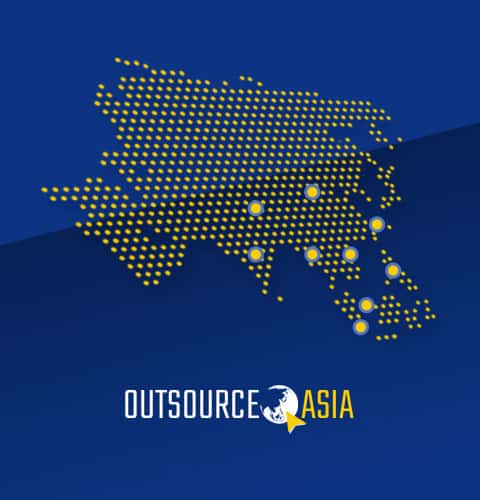
How to Win Big in the Outsourcing Asia Industry
For years, outsourcing has been one of the most sought-after business models for companies in Asia. However, there is still a lot of confusion about how to win big in this industry.
A good outsourcing partner will offer you support throughout your journey from start to finish. They will help you study your target market, analyze the competition and develop a strategy that will allow you to dominate your niche.
You can find talent in Asia, and it’s a great place to do business.
- Asia is a hub for outsourcing, with many global companies operating there.
- The cost of doing business in Asia is lower than most places in the world, which makes it an attractive option for your company’s bottom line.
- The region has a large pool of skilled workers who speak English fluently (and often better than yours). This means that if you need someone who can translate documents or translate files into other languages, they’ll be able to do so quickly and efficiently—saving time and money on translation costs!
Outsourcing to Asia presents big business opportunities for companies of all sizes – even freelancers. However there are 5 key points to consider to make sure you win big in the outsourcing Asia industry.
1. Know what you’re outsourcing
The first step in the process is to know what you’re outsourcing. If your company doesn’t have a clear answer of what it’s outsourcing and its purpose, then it’s going to be hard for you to find an effective partner because they won’t be able to help you if they don’t understand what needs doing or why.
It’s also important that as a business owner, you are clear with yourself on what the goals are when outsourcing work. Are there multiple goals? What does success look like for each goal? Once this information is established in writing (and ideally with someone else), then it will become easier for both parties involved—you and your outsourcer—to communicate more effectively during negotiations and ensure that both sides are getting what they want from the relationship.
2. Define your needs and requirements
The next step is to define your outsourcing requirements. What are the key requirements of this job? What is the timeline for completion, and how much money are you willing to spend on it?
Once you’ve answered these questions, it’s time to start looking for suitable candidates.
There are many ways to find a freelancer, including job boards and social media. One of the most popular websites for finding freelance writers is Upwork (formerly oDesk). On this platform, you can search for writers by location, experience level and other factors.
To find large scale partners, its best to tap an organization such as Outsource Asia who can help pair you with the best reputable outsourcing partner for your company.
3. Select the right outsourcing partner
To be successful in the outsourcing industry, you need to find a partner that has experience in your industry and has a good track record. Look for a partner with high customer satisfaction rates, good reputation and an established customer service policy. You can also ask them how they handle complaints or issues that arise during their work with your company. A flexible approach will help if something unexpected happens or if there are delays caused by unforeseen circumstances such as bad weather conditions or labor shortages at the supplier site.
4. Evaluation metrics
Next, you need to evaluate a few important things.
Evaluate the quality of the work being done.
- Are your employees getting trained in-house?
- Are they being given access to equipment and tools, such as a 3D printer or laser cutter, that would otherwise be unavailable if you outsourced everything?
Evaluate the cost of outsourcing.
- How much does it cost to outsource this particular task versus hiring an employee for it yourself? Is there any savings in terms of overhead costs (like benefits) that can be passed on directly to clients without increasing prices too much (or at all)?
Evaluate the speed at which work is being done by an external company vs what could be done internally within your own organization. In other words: Is quicker turnaround possible with outsourcing than if someone else were doing it instead? If so, how fast does this happen and how often do you need to wait before getting results back from them again after sending them off somewhere else first time around towards completing tasks quickly enough so as not lose any profits due to having missed deadlines.
5. Establish a collaborative partnership in the workplace
One of the most important things you can do as an outsourcer is to establish a collaborative partnership with your team, especially if you’re going to be working remotely. It’s important that they feel like they can contribute and have input into how their work gets done, so don’t micromanage or treat them like children (unless they are). Be open about what needs to happen next and encourage collaboration between teams by setting clear goals and expectations for each person who’s working on a project together. If there’s something specific that needs done within this team, then let everyone know ahead of time so everyone has time to prepare before moving forward with it—this might mean having someone else help out with research or development tasks during off hours when nobody else is around. Don’t be afraid to ask for help either; sometimes all it takes is asking for someone else’s opinion about something before realizing just how easy it would have been instead!
Outsourcing is not the same as offshoring or offshore development. It’s could simply be hiring employees who work remotely from their own home country. Outsourcing is great for companies, but it can also be a good option for freelancers. With the right tools, you can find freelance work and manage your business all from one place.
Outsourcing is a great way to expand your business, but there are a few things you need to keep in mind before doing so. First and foremost is the importance of defining your needs and requirements before going into any negotiations.
You should also make sure that you choose an appropriate partner who has the skillset necessary to fulfill those requirements. Finally, as with any other type of business transaction, make sure that all parties involved understand what they’re signing up for when working together!
What criteria do you employ to choose the perfect Outsourcing Partner? If you need help in finding the right outsourcing partner, book a FREE APPOINTMENT with Outsource Asia experts today.


